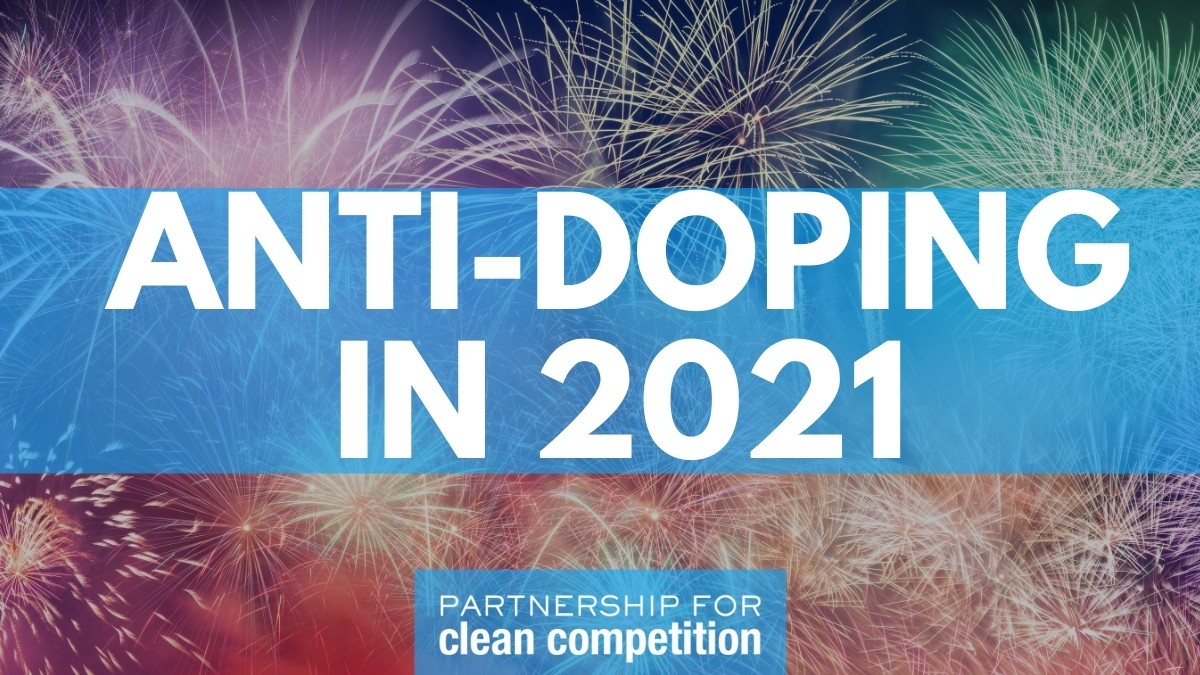2020 was a challenging year, but it’s behind us now. It’s time to reflect on what we learned and look ahead to 2021! We asked several WADA-accredited lab directors about the last year and the new one we’re just starting.
What is one thing that stands out to you about anti-doping in 2020? This could be a particularly impactful trial, a new piece of research, or any general trend in the field.
Prof. Dr. Peter Van Eenoo, Director of the Ghent Lab: That in spite of all the difficulties encountered due to the global pandemic and the temporary set-backs this has undoubtedly caused in the fight against doping, major steps have been set in the minds of people to look at what we do from many different angles. I am sure that these little seeds of alternative methodologies and activities will grow and change the way we do testing profoundly within a few years. Just like the EPO crisis was needed to allow for blood collection in anti-doping and to spur the establishment of WADA, the COVID pandemic will lead to innovations in sample collection and anti-doping methods.
Dr. Tiia Kuuranne, Director of the Lausanne Lab: As the main activity of an anti-doping laboratory is the analysis of anti-doping samples, it is not possible to comment on trends of 2020 without mentioning the impact of the pandemic on routine activities. Depending on the country, structure of the host organization, and the amplitude of the sanitary crises, the different anti-doping laboratories have experienced this year in very different ways. If the focus is put on research activities, it might have benefitted the temporarily decelerated routine, as the scientists have had the possibility to put more efforts toward research projects. This has already been seen as a peak in absolute number of scientific publications.
Prof. Mario Thevis, Director of the Cologne Lab: The COVID-19 crisis severely affected the global anti-doping programs and demonstrated the importance of complementary strategies that support physically unattended whilst virtually observed sample collections.
What is one thing you’ll be watching for in anti-doping in 2021? This could be a field of research you expect to make big strides, some new technology in use, or again, any general trends in the field.
Prof. Dr. Peter Van Eenoo, Director of the Ghent Lab: One decade ago, liquid chromatography coupled to high-resolution mass spectrometry made its way into routine testing. Showing unprecedented possibilities for retrospective analysis and inclusion of new metabolites and markers, paving the way for metabolomics and steroidomice, etc. In 2021, I expect that this high-resolution mass spectrometry technology will make its way across several laboratories around the world…but coupled to gas chromatography. This will be even more spectacular. Together with the newly discovered possibility to detect sulphate conjugated steroids on this technique, I expect to see unparalleled progress in the detection of exogenous steroids.
Dr. Tiia Kuuranne, Director of the Lausanne Lab: Although this branch of technology has been studied for many years, I look forward to seeing the results from the various research projects on dried blood spots (DBS) and their application to routine testing and analysis.
Prof. Mario Thevis, Director of the Cologne Lab: Ensuring frequent anti-doping tests is critical to protect the honest athlete from unjustified suspicion and/or even accusation, and pilot projects spearheaded by USADA, NADA Germany, and several other national anti-doping organizations superbly illustrated the possibilities and acceptance of alternative testing options in support of clean sport.




